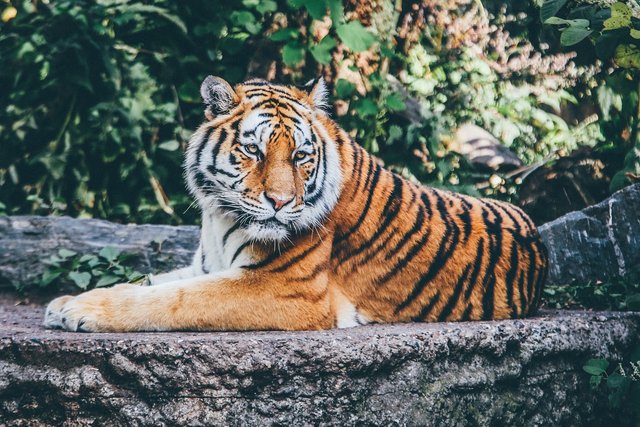India is one of the countries with the greatest biodiversity in the world. Its vast territory covers various types of ecosystems and habitats, ranging from wetlands, deserts, coastal and marine ecosystems, forests, and so on. This country is also known to have 4 of the 34 biodiversity hotspots on earth, namely the IndiHimalaya region, Indo-Burma, Western Ghats and Sundaland. Biodiversity hotspots are areas inhabited by various species. It is not surprising that India is home to 90 thousand animal species. This includes the big cats, the name for the roaring cat species. Big cats belong to the genus Panthera as well as cheetahs and mountain lions (cougars). We must be familiar with one of the big cats that is an icon for India, namely the Bengal tiger. Well, in this article, let's get to know the Bengal tiger and other big cats in India better. The Bengal tiger is one of the tiger subspecies in the world. This animal with the Latin name Panthera tigris is the national animal of India because its population is widespread in various parts of the country. Bengal tigers can live in various habitats, such as tropical forests, mangrove forests in the Sundarbans, and grasslands. These solitary animals will walk long distances to find prey such as wild boar, buffalo, deer or other large mammals. They usually target their prey at night. In terms of size, Bengal tigers are not the largest tiger subspecies, but they are also not as small as Sumatran tigers, while the body length of male tigers can reach 1.5 to 2 meters, weighing around 40 to 80 kilograms, while female Bengals are smaller with a length of only 1 to 1.5 meters and weighing 30 to 50 kilograms. The population of Bengal tigers in the wild is currently between 1,500 and 2,000. However, with the threat of hunting and reduced habitat, Bengal tigers are declared endangered animals.

The Indian leopard is one of the leopard subspecies in India. This mammal with the Latin name Panthera pardus fusca lives in forests, be it tropical rainforests, deciduous forests, coniferous forests, temperate rainforests, to mangrove forests in the Sundarbans, Indian leopards are usually active at night, precisely between dusk and sunrise. During the day, the animal that is good at climbing will sleep on tree branches. Indian leopards are opportunistic animals that will prey on anything in their habitat. Some animals that are often part of their prey are Indian hares, peacocks, wild boars, primates and various types of antelopes. The population of Indian leopards is estimated to be in the range of 6,000 to 10,000. Currently, this mammal that is good at swimming is vulnerable, with the main threats being poaching that targets its fur and organs and conflicts with humans. Not only the leopard Panthera pardus fusca is in India, Panthera uncia or snow leopard also exists in this country. They can be found in the cold and steep highlands of the Himalayas or Lesser Himalayas such as Jammu & Kashmir, Himachal Pradesh, Uttarakhand, Sikkim, and Arunachal Pradesh. Male snow leopards can reach a body length of 1.3 meters, with a fairly light weight of between 35 and 55 kilograms. Meanwhile, female leopards are smaller with a length of up to 1.1 meters and a weight of only 25 to 40 kilograms. The population of snow leopards in India is estimated at 718. Globally, the population of this animal is between 3,500 and 7,000. With their beautiful white fur, snow leopards in India are targeted by hunters. In addition, climate change, reduced prey such as blue sheep and ibex, and conflict with humans have also made the sustainability of this valuable big cat threatened with extinction. Neofelis nebulosa or clouded leopard is a shy big cat found in northeastern India. The population of clouded leopards in India has been unknown since they were first detected in 1821, but the species is considered rare and difficult to find. Male clouded leopards are about 1.1 meters long and weigh between 15 and 23 kilograms. Females are usually smaller and lighter. The big cats that like to prey on small mammals and birds can be identified by their unique, dark body patterns. They also have larger canine proportions and longer tails than other big cats.
Downvoting a post can decrease pending rewards and make it less visible. Common reasons:
Submit